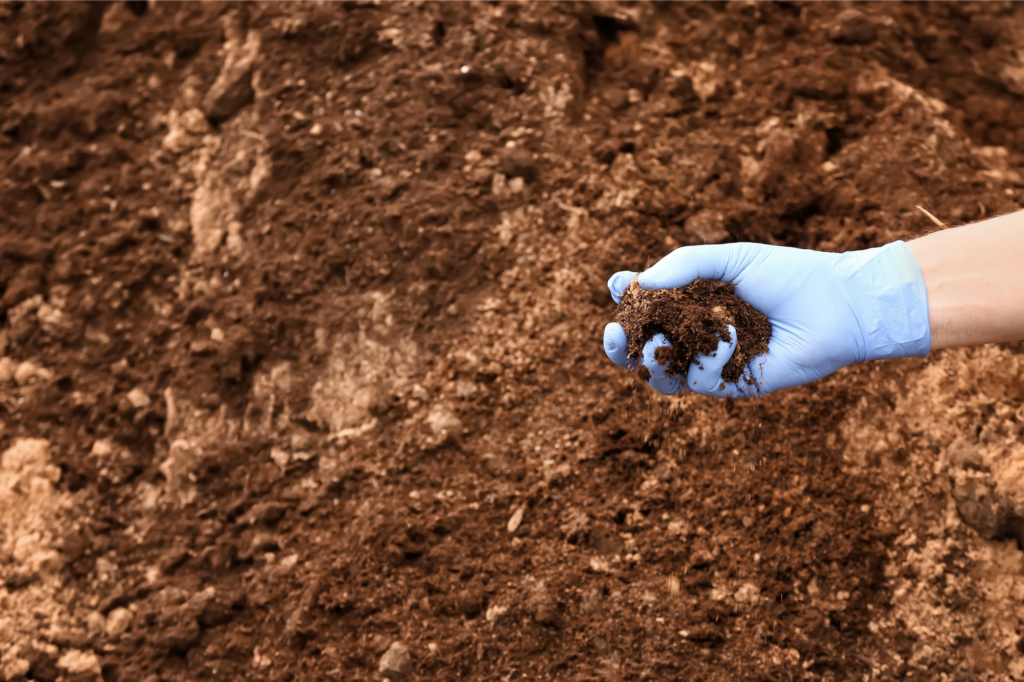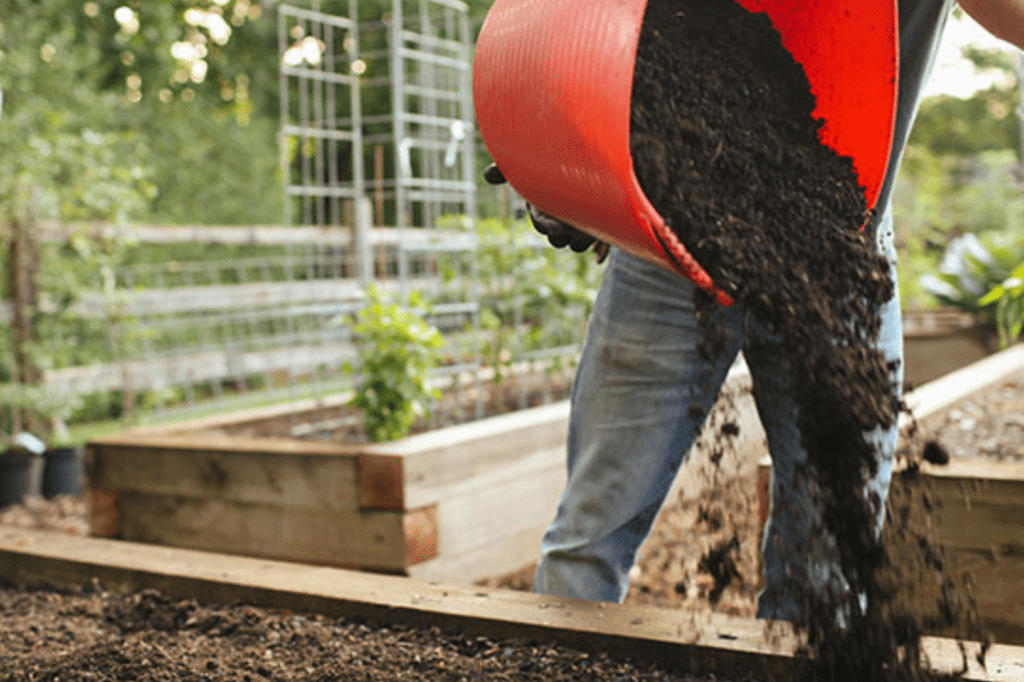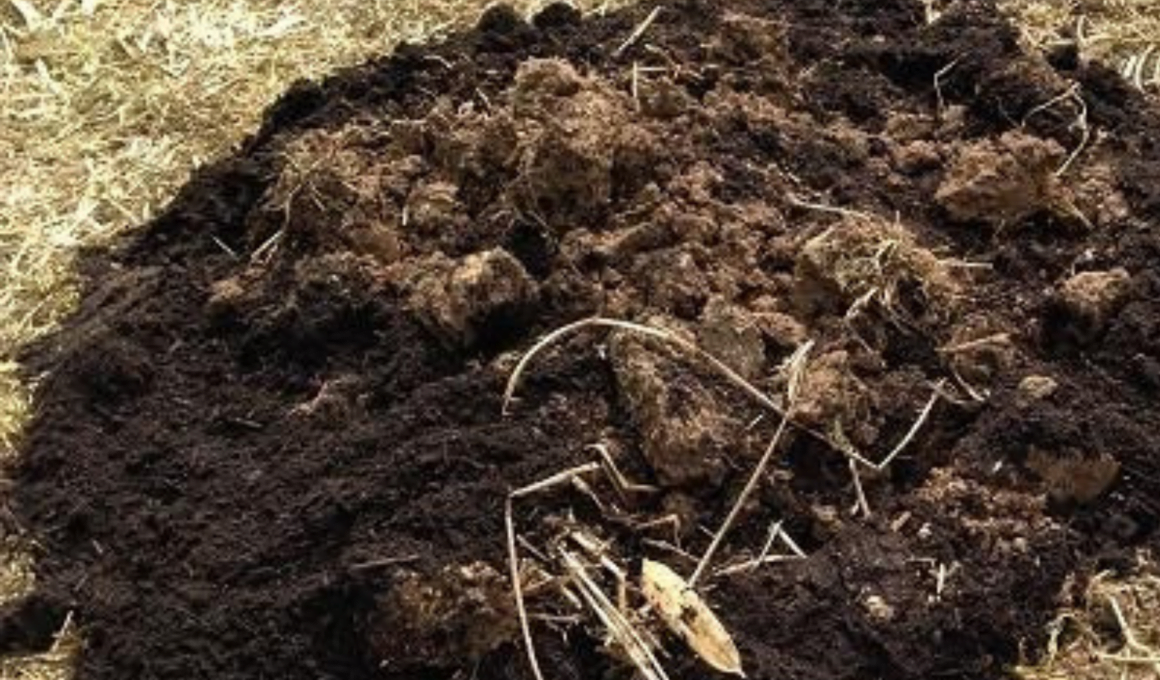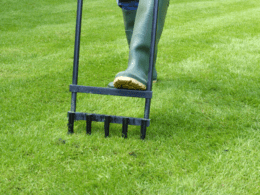Quick Summary
- Adding organic matter improves lawn health and safety.
- Organic materials increase nutrient levels, improve soil structure, and promote a thriving ecosystem.
- Test soil before adding organic materials.
- Remove debris and weeds before applying organic matter.
Understand the Benefits of Organic Matter
Discover the amazing benefits of adding organic matter to your lawn and experience the joy of a healthier, more vibrant outdoor space. When it comes to maintaining a beautiful lawn, using organic matter can be a game-changer. Not only does it provide essential nutrients to your soil, but it also helps improve soil structure and water retention. By incorporating organic matter into your lawn, you’re promoting a healthy and balanced ecosystem. One of the key benefits of using organic matter is its ability to enhance soil health. Organic matter acts as a natural fertilizer, releasing nutrients slowly over time, which prevents nutrient run-off and leaching. This ensures that your lawn receives a steady supply of nutrients, promoting strong root growth and overall plant health. In addition, organic matter improves soil structure by loosening compacted soil and increasing its ability to hold water. This can be especially beneficial in areas with heavy clay or sandy soil, as it helps to create a more fertile and well-drained environment. Another advantage of using organic matter is its ability to attract beneficial organisms to your lawn. These organisms, such as earthworms and beneficial bacteria, help break down organic matter and create a healthy soil ecosystem. They also aid in the decomposition process, converting organic matter into humus, a nutrient-rich substance that further improves soil fertility. By adding organic matter to your lawn, you’re not only improving its appearance but also creating a safer outdoor space. Organic matter reduces the need for chemical fertilizers and pesticides, making it a safer option for both your family and the environment. So, why wait? Start incorporating organic matter into your lawn today and reap the numerous benefits it has to offer.Test Your Soil
Uncover the quality of your soil by testing it for optimal growth conditions in preparation for a healthier, more vibrant outdoor space. Before adding organic matter to your lawn, it’s important to know what your soil needs. By conducting a soil testing and nutrient analysis, you can determine the specific deficiencies and pH levels in your soil. This will help you make informed decisions about the type and amount of organic matter to add.
Soil testing involves collecting soil samples from different areas of your lawn and sending them to a reputable laboratory for analysis. The lab will provide you with a detailed report that includes information about the levels of essential nutrients such as nitrogen, phosphorus, and potassium. It will also indicate the pH level, which is crucial for nutrient availability.
By testing your soil, you can avoid over or under-fertilizing your lawn, which can lead to nutrient imbalances and other issues. Additionally, a soil test can identify potential contaminants or excess levels of certain elements that may be harmful to both your lawn and the environment.
Investing in a soil test is a proactive step towards maintaining a healthy and safe outdoor space. It allows you to tailor your organic matter additions to meet the specific needs of your lawn, promoting optimal growth and minimizing the risk of nutrient deficiencies or excesses.
By conducting a soil testing and nutrient analysis, you can determine the specific deficiencies and pH levels in your soil. This will help you make informed decisions about the type and amount of organic matter to add.
Soil testing involves collecting soil samples from different areas of your lawn and sending them to a reputable laboratory for analysis. The lab will provide you with a detailed report that includes information about the levels of essential nutrients such as nitrogen, phosphorus, and potassium. It will also indicate the pH level, which is crucial for nutrient availability.
By testing your soil, you can avoid over or under-fertilizing your lawn, which can lead to nutrient imbalances and other issues. Additionally, a soil test can identify potential contaminants or excess levels of certain elements that may be harmful to both your lawn and the environment.
Investing in a soil test is a proactive step towards maintaining a healthy and safe outdoor space. It allows you to tailor your organic matter additions to meet the specific needs of your lawn, promoting optimal growth and minimizing the risk of nutrient deficiencies or excesses.
Choose the Right Organic Materials
To ensure the optimum growth conditions for your outdoor space, it’s essential to select the appropriate organic materials. Choosing organic materials is crucial as they provide essential nutrients to your lawn while promoting a safe and healthy environment. Here are five organic materials that you can use to add organic matter to your lawn:
Here are five organic materials that you can use to add organic matter to your lawn:
- Compost: It enriches the soil with nutrients and improves its structure.
- Grass clippings: They are a readily available source of nitrogen and can be easily incorporated into the soil.
- Leaves: They can be shredded and spread over the lawn to add organic matter and improve soil moisture retention.
- Animal manure: It provides essential nutrients and helps improve soil fertility, but make sure to use well-composted manure to avoid any potential health risks.
- Peat moss: It helps with moisture retention and improves soil structure.
Prepare Your Lawn for Organic Matter
Get ready to transform your outdoor oasis into a lush and thriving paradise by preparing it for the nourishing goodness it deserves. Prepping your soil is a crucial step in adding organic matter to your lawn. Start by removing any debris, such as rocks or sticks, that may hinder the growth of your grass. This will ensure that the organic materials can penetrate the soil effectively. Next, it’s important to test your soil’s pH level. You can easily do this by using a soil testing kit, which can be found at your local garden center. Adjusting the pH to the optimal range of 6.0 to 7.0 will create the ideal environment for your grass to absorb nutrients from the organic matter. To improve fertility, consider using compost or aged manure. These organic materials are rich in nutrients that will nourish your lawn and promote healthy growth. Spread a layer of compost or aged manure evenly over your lawn, making sure to cover all areas. After applying the organic matter, lightly rake it into the soil to ensure proper incorporation. Water your lawn thoroughly to help the organic materials settle and start breaking down. This will encourage the release of nutrients into the soil, further enhancing its fertility. By following these steps, you’ll be well on your way to creating a lawn that’s rich in organic matter and thriving with lush green grass. Enjoy the benefits of a healthy and vibrant outdoor space!Apply Organic Matter
To apply organic matter to your lawn, start by spreading compost or mulch evenly over the surface. This will help improve soil structure and provide nutrients for your grass. Next, incorporate the organic matter into the soil by using a rake or garden fork to mix it in. Finally, consider topdressing and overseeding your lawn to further enhance its health and appearance.Spread Compost or Mulch
Spread compost or mulch onto your lawn to quickly and effectively add organic matter. Not only will this improve the health of your soil, but it’ll also benefit your plants and promote a lush, green lawn. Here’s why you should consider spreading compost or mulch:- Retains Moisture: Mulch acts as a protective layer, reducing evaporation and keeping your soil moist for longer periods. This helps your lawn withstand dry spells and reduces the need for frequent watering.
- Suppresses Weeds: Organic mulch inhibits weed growth by blocking sunlight, preventing weed seeds from germinating. Say goodbye to tedious weeding tasks!
- Adds Nutrients: Compost and mulch break down over time, releasing essential nutrients into the soil. This nourishes your lawn, encouraging healthy growth and vibrant colors.
Incorporate Organic Matter into the Soil
By mixing in compost or mulch, your soil becomes a rich and fertile environment for plants to thrive. Incorporating organic matter into the soil has numerous benefits. Firstly, it improves soil structure, allowing for better drainage and water retention. This helps prevent waterlogging and soil erosion, ensuring the safety of your lawn. Secondly, organic matter provides essential nutrients for plants, promoting healthy growth and reducing the need for chemical fertilizers. It also enhances soil microbial activity, aiding in the breakdown of pollutants and improving soil health. To incorporate organic matter into your soil, you can use techniques such as tilling it into the topsoil, layering it on top as a mulch, or using a compost tea to water your lawn. These methods will enhance the safety and overall well-being of your lawn, creating a lush and vibrant outdoor space.| Benefits of Incorporating Organic Matter into the Soil | Techniques for Incorporating Organic Matter into the Soil | |||
|---|---|---|---|---|
| Improves soil structure | Tilling organic matter into the topsoil | |||
| Enhances nutrient availability | Layering organic matter as a mulch | |||
| Boosts soil microbial activity | Using compost tea to water the lawn | Promotes healthier plant growth | by providing a steady supply of nutrients and beneficial microbes. |
Topdress and Overseed
Enhance the beauty and health of your outdoor space by topdressing and overseeding. These two practices can greatly improve the condition of your lawn and promote its overall health. Topdressing involves adding a thin layer of organic matter, such as compost or peat moss, to the surface of your lawn. This has several benefits, including improving soil structure, increasing moisture retention, and providing essential nutrients to the grass. It also helps to level out any uneven areas in your lawn. Before overseeding, it’s important to prepare the area by mowing the grass shorter than usual and removing any debris. This will allow the new seeds to make direct contact with the soil, ensuring better germination and establishment. Following these steps will help you achieve a lush and vibrant lawn that you can enjoy safely.Which Type of Mower is Best for Maintaining a Lawn with Added Organic Matter?
Maintaining a lawn with added organic matter requires careful consideration when selecting a mower. A reel mower vs rotary mower comparison can help in making an informed decision. Reel mowers are ideal for quiet and clean cuts, suitable for shorter lawns. On the other hand, rotary mowers with their powerful blades handle longer grass and organic material better. Ultimately, the choice between the two depends on the specific needs of the lawn.
Does Adding Organic Matter to Your Lawn Affect the Frequency of Watering in the Summer?
Adding organic matter to your lawn during summer can significantly affect the frequency of watering your lawn during summer. Organic matter, such as compost, helps improve soil structure and moisture retention ability, reducing water requirements. By incorporating organic matter into your lawn, you create a healthier and more water-efficient ecosystem that necessitates less frequent watering in the hot summer months.
What are the Benefits of Allowing Your Lawn to Go Natural in Terms of Adding Organic Matter?
Allowing your lawn to go natural has numerous benefits when it comes to adding organic matter. The pros and cons of natural lawns include reduced need for chemical fertilizers, pesticides, and herbicides, as well as improved soil health and enhanced biodiversity. Organic matter like decomposed leaves and grass clippings can enrich the soil, promoting nutrient availability and moisture retention. Additionally, natural lawns support beneficial insects and pollinators, contributing to a healthier ecosystem overall.
Water and Maintain Your Lawn
To keep your lawn looking lush and healthy, it’s important to give it regular watering and maintenance. Proper lawn watering is crucial for promoting root growth and preventing drought stress. Make sure to water deeply and infrequently, allowing the water to penetrate at least 6 inches into the soil. This will encourage the roots to grow deeper, making your lawn more resistant to drought and disease. When it comes to lawn maintenance, there are a few key tasks to keep in mind. First, mow your lawn regularly and at the correct height. Cutting the grass too short can stress the roots and make your lawn more susceptible to weeds. Second, remove any weeds or debris that may be present on the lawn. Weeds compete with your grass for nutrients and water, so it’s important to keep them in check. Finally, fertilize your lawn regularly to provide it with the nutrients it needs to thrive. In terms of safety, it’s important to follow some precautions when watering and maintaining your lawn. Avoid watering during the hottest part of the day to minimize water evaporation and prevent burning the grass. Also, be cautious when using lawn maintenance equipment to avoid any accidents or injuries. By following these tips, you can ensure that your lawn stays healthy and beautiful all year round.Can Adding Organic Matter to My Lawn Help Melt Ice on the Grass?
Adding organic matter to your lawn can indeed help melt ice on grass. Organic matter, such as compost or mulch, can enhance soil structure, improve drainage, and increase nutrient availability. This improved soil health allows for faster melting of ice, reducing damage to your grass and promoting better overall lawn health.
To keep your lawn looking lush and healthy, it’s important to give it regular watering and maintenance. Proper lawn watering is crucial for promoting root growth and preventing drought stress. Make sure to water deeply and infrequently, allowing the water to penetrate at least 6 inches into the soil. This will encourage the roots to grow deeper, making your lawn more resistant to drought and disease. When it comes to lawn maintenance, there are a few key tasks to keep in mind. First, mow your lawn regularly and at the correct height. Cutting the grass too short can stress the roots and make your lawn more susceptible to weeds. Second, remove any weeds or debris that may be present on the lawn. Weeds compete with your grass for nutrients and water, so it’s important to keep them in check. Finally, fertilize your lawn regularly to provide it with the nutrients it needs to thrive. In terms of safety, it’s important to follow some precautions when watering and maintaining your lawn. Avoid watering during the hottest part of the day to minimize water evaporation and prevent burning the grass. Also, be cautious when using lawn maintenance equipment to avoid any accidents or injuries. By following these tips, you can ensure that your lawn stays healthy and beautiful all year round.Monitor the Results
Keep an eye on the outcome by regularly assessing the condition of your lawn to ensure its health and vitality. Monitoring techniques are essential to evaluate the success of your efforts in adding organic matter to your lawn. By observing the changes in your lawn’s appearance and growth, you can determine if the organic matter is being effectively incorporated into the soil. One way to monitor the results is by checking the color and texture of your lawn. A healthy lawn should have a vibrant green color and a soft texture. If you notice any yellowing or patchiness, it may indicate a nutrient deficiency or inadequate organic matter distribution. Another monitoring technique is to inspect the root depth and density. A well-nourished lawn will have deep and dense roots, which are crucial for nutrient absorption and water retention. Gently dig a small hole and examine the roots to ensure they are growing strong and deep. Additionally, keep an eye out for any signs of pests or diseases. Organic matter can help improve the resilience of your lawn, making it less susceptible to attacks. However, it’s still important to regularly check for any signs of infestation or disease, such as wilting, discoloration, or unusual spots. By regularly monitoring the condition of your lawn and evaluating the success of your organic matter addition, you can ensure the health and vitality of your lawn for years to come.Long-Term Organic Lawn Care Practices
Maintaining a healthy and vibrant lawn over the long-term involves implementing sustainable practices that nurture the natural ecosystem. By adopting long-term organic lawn care practices, you can ensure the long-term sustainability of your lawn while minimizing its environmental impact. Here are four key practices to incorporate:- Water conservation: Use a rain gauge to determine when your lawn needs watering and water deeply but infrequently to encourage deep root growth. This reduces water usage and promotes drought tolerance.
- Natural fertilization: Instead of using synthetic fertilizers that can harm the environment, opt for organic alternatives such as compost or organic fertilizer. These provide essential nutrients to the soil without the risk of leaching into water sources.
- Natural pest control: Avoid using chemical pesticides that can harm beneficial insects and pollinators. Instead, introduce natural predators, like ladybugs or nematodes, to control pests. Additionally, encourage biodiversity by planting native plants and creating habitats for beneficial insects.
- Aeration and overseeding: Regularly aerate your lawn to improve soil compaction and allow nutrients to penetrate deeper. Overseed with drought-tolerant grass varieties to maintain a thick and healthy lawn.









